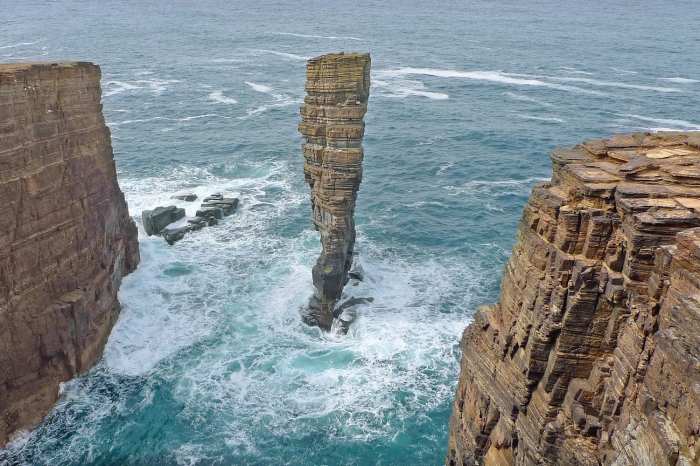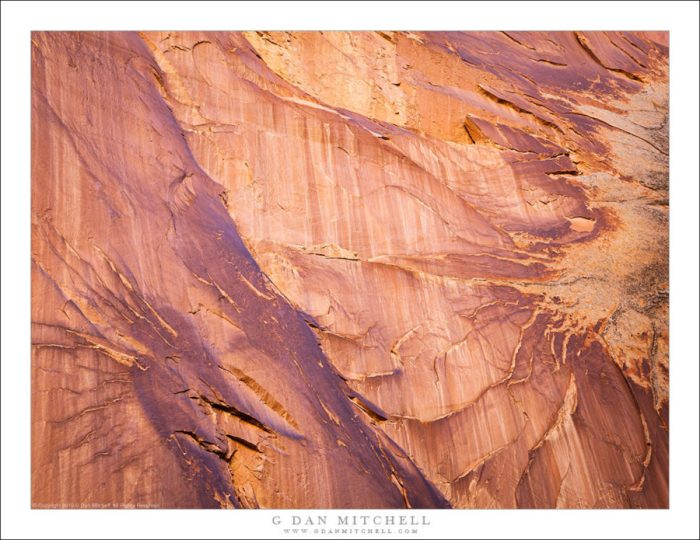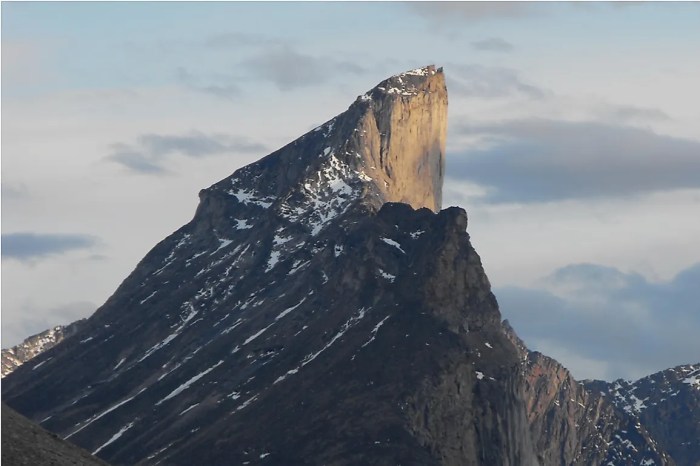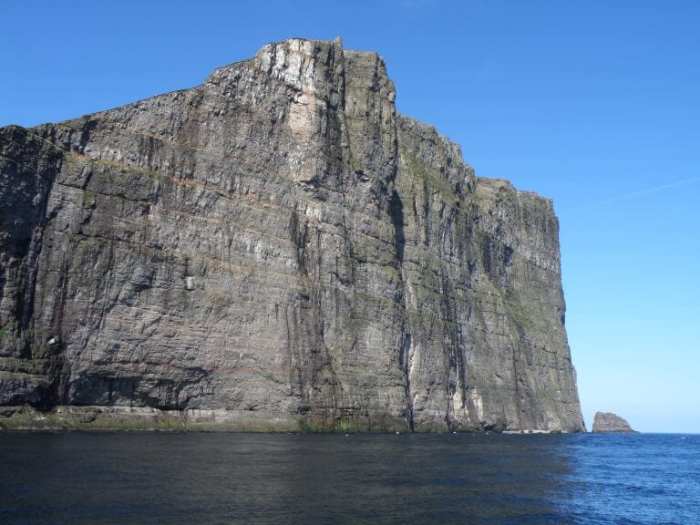Protruding feature on a cliff – Protruding features on cliffs, captivating geological formations that jut out from sheer rock faces, invite exploration and inspire awe. These enigmatic structures, shaped by eons of geological forces and environmental interactions, hold a wealth of stories waiting to be uncovered.
From their unique ecological roles to their historical and cultural significance, protruding features on cliffs are multifaceted wonders that offer a glimpse into the intricate tapestry of nature and human history.
Description of Protruding Feature

The protruding feature on the cliff is a distinctive geological formation that juts out prominently from the cliff face. It is approximately 20 meters in height and 15 meters in width, forming a large, irregularly shaped mass.
The composition of the protruding feature is primarily limestone, a sedimentary rock formed from the accumulation of calcium carbonate over millions of years. The limestone has a layered structure, with visible bedding planes that indicate the different periods of deposition.
The surface of the feature is weathered and eroded, giving it a rugged and textured appearance.
Location on the Cliff
The protruding feature is situated on the western side of the cliff, approximately 50 meters above the base. It is oriented towards the northwest, providing a panoramic view of the surrounding landscape. The feature is accessible by a narrow path that leads to its base, but the ascent to its summit requires technical climbing skills.
Geological Formation

The protruding feature on the cliff is a testament to the powerful forces that have shaped the Earth’s surface over millions of years. A complex interplay of geological processes, including erosion, weathering, and tectonic activity, has given rise to its unique structure.
Erosion
Erosion, the gradual wearing away of landforms by natural forces, has played a significant role in shaping the protruding feature. Wind, water, and ice have relentlessly sculpted the cliff, carving out the soft rock and leaving behind the more resistant formations.
Weathering
Weathering, the breakdown of rocks and minerals at the Earth’s surface, has further contributed to the formation of the protruding feature. Chemical weathering, caused by the interaction of water, oxygen, and acids with the rock, has weakened the cliff’s surface, making it more susceptible to erosion.
Tectonic Activity
Tectonic activity, the movement of the Earth’s crust, has also influenced the formation of the protruding feature. The uplift of the cliff, caused by tectonic forces, has exposed the underlying rock layers to the relentless forces of erosion and weathering.
Rock Composition
The type of rock or sediment that composes the protruding feature is crucial in determining its resistance to erosion and weathering. Harder rocks, such as granite or sandstone, are more resistant and tend to form the more prominent features, while softer rocks, such as limestone or shale, are more easily eroded and form the recessed areas.
Ecological Significance

The protruding feature serves as a vital component of the local ecosystem, offering a diverse array of habitats for both flora and fauna.
The unique topography created by the protrusion provides sheltered microclimates and microhabitats that support a variety of plant species. These plants, in turn, provide food and nesting sites for a range of animals, including insects, birds, and small mammals.
Nesting and Roosting Site
The crevices and overhangs within the protruding feature offer ideal nesting and roosting sites for various bird species. The sheltered nature of these spaces protects nests from predators and harsh weather conditions, while the proximity to food sources ensures a reliable supply of sustenance.
- The Eurasian eagle-owl ( Bubo bubo) is known to nest on the upper ledges of the protrusion, taking advantage of the secluded and well-protected environment.
- The common swift ( Apus apus) utilizes the overhangs as roosting sites during migration, seeking shelter from the elements and potential predators.
Foraging Ground
The protruding feature also serves as a foraging ground for a variety of animals. The abundance of insects and other invertebrates attracted to the vegetation provides a rich food source for birds, bats, and small carnivores.
- The lesser horseshoe bat ( Rhinolophus hipposideros) hunts for insects in the crevices and overhangs of the protrusion.
- The stoat ( Mustela erminea) utilizes the feature as a hunting ground, stalking its prey among the vegetation and rocks.
Historical and Cultural Significance

The protruding feature has held significant historical and cultural value throughout the ages.
Local Folklore and Legends
In local folklore, the feature is believed to be the petrified remains of a giant who was turned to stone by a powerful sorcerer. Another legend tells of a princess who was imprisoned within the rock and can only be freed by a brave knight who solves her riddle.
Protruding features on a cliff can be quite a sight to behold, especially when they’re shaped like a giant thumb or a majestic eagle. And if you’re looking for a study guide that will help you ace your next test on protruding cliff features, then you should definitely check out the ai study guide maker from pdf . It’s like having a personal tutor in your pocket, and it’s sure to help you reach new heights in your studies.
Just remember to take a break from studying every once in a while to admire the protruding features on the cliffs around you. You might just be surprised at what you see.
Religious Beliefs
The protruding feature is also considered sacred in some religious traditions. Pilgrims from far and wide visit the site to pay homage and offer prayers. It is said that the rock possesses healing powers and can grant wishes to those who touch it.
Archaeological Significance, Protruding feature on a cliff
Archaeological excavations around the protruding feature have uncovered evidence of human habitation dating back thousands of years. Stone tools, pottery fragments, and other artifacts suggest that the site was once a thriving settlement or a place of religious significance.
Safety Considerations: Protruding Feature On A Cliff

The protruding feature presents potential hazards that must be considered for the safety of visitors and climbers. It is crucial to be aware of these risks and take appropriate precautions to ensure a safe and enjoyable experience.
The most significant hazard associated with the feature is rockfalls. Erosion and weathering can cause rocks to become loose and dislodged, creating a risk of falling debris. Climbers and visitors should be aware of their surroundings and avoid areas where loose rocks are present.
Additionally, unstable ground can pose a tripping or falling hazard, especially in areas where erosion has weakened the surface.
Responsible Exploration and Conservation Practices
Responsible exploration and conservation practices are essential to preserve the integrity of the protruding feature and protect its natural environment. Visitors should avoid damaging the feature by climbing or walking on fragile surfaces. It is also important to refrain from removing rocks or plants, as these elements contribute to the unique character and ecological value of the area.
Aesthetic Value
The protruding feature commands attention with its captivating visual appeal, contributing significantly to the allure of the landscape. Its distinct shape, intricate texture, and rich hues create a mesmerizing spectacle that invites artistic expression and admiration.
Shape
The feature’s shape is a testament to the capricious forces of nature. Its irregular contours, sharp angles, and smooth curves create a dynamic composition that captures the eye. From afar, it resembles a colossal sentinel guarding the landscape, while up close, its intricate details reveal a world of hidden wonders.
Texture
The surface of the feature is a tapestry of textures, from smooth and polished to rough and weathered. Eons of erosion have etched intricate patterns into the rock, creating a tactile symphony that invites exploration. Its crevices and fissures provide a haven for mosses and lichens, adding a vibrant splash of color to the otherwise neutral palette.
Color
The protruding feature’s hues are a symphony of earth tones, ranging from deep reds and oranges to subtle grays and greens. These colors reflect the mineral composition of the rock and the passage of time. The interplay of light and shadow creates a constantly shifting canvas, transforming the feature’s appearance throughout the day.
Artistic Inspiration
The protruding feature’s aesthetic qualities have inspired countless artists, photographers, and poets. Its rugged beauty and evocative form have been captured in paintings, photographs, and written works. Its timeless appeal continues to captivate the imagination, providing a muse for creative expression.
FAQs
What factors contribute to the formation of protruding features on cliffs?
Erosion, weathering, and tectonic activity play significant roles in shaping these formations.
Do protruding features on cliffs have ecological importance?
Yes, they provide habitat for plants and animals, and support unique adaptations and ecological interactions.
Can protruding features on cliffs be hazardous?
Yes, potential hazards include rockfalls and unstable ground, so safety precautions should be taken when exploring them.